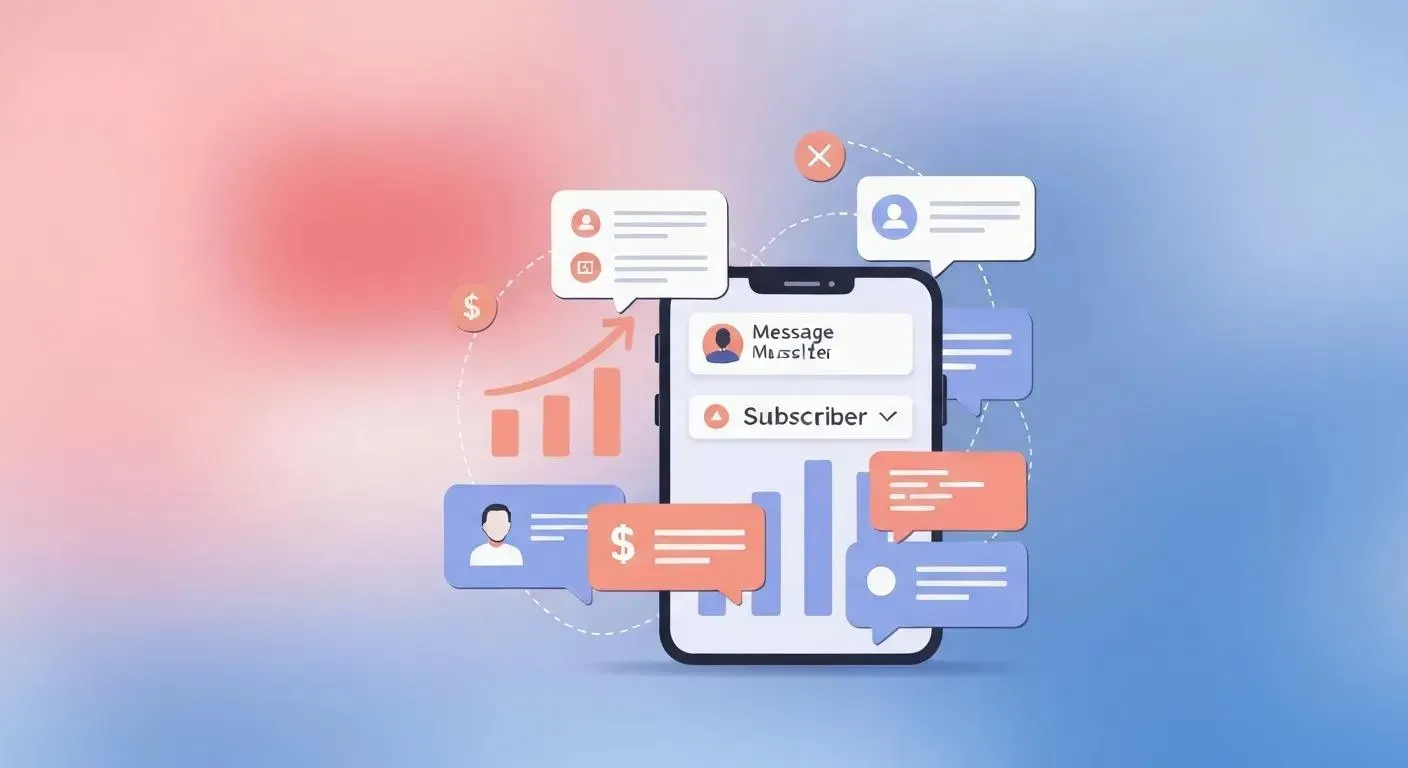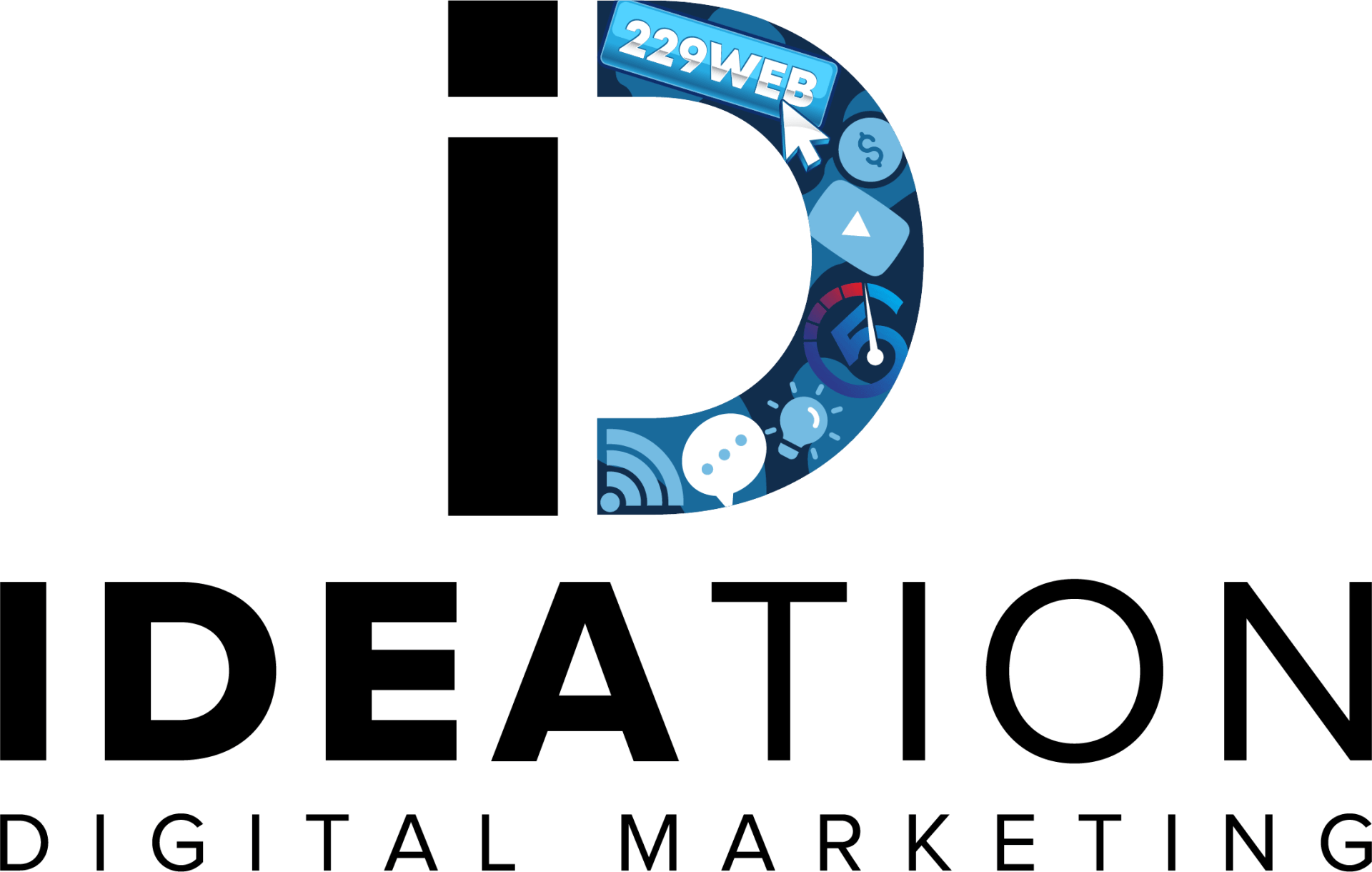Content Marketing Tips for Small Businesses: How to Create Engaging Content That Drives Growth

In today's digital marketplace, small businesses face unprecedented competition for customer attention. While large corporations have substantial marketing budgets and dedicated teams, small businesses must be strategic and resourceful with their content marketing efforts. The good news is that effective content marketing doesn't require massive budgets—it requires understanding your audience, creating valuable content, and implementing consistent strategies that drive meaningful engagement and business growth.
This comprehensive guide explores proven content marketing strategies specifically designed for small businesses. From developing a content strategy to creating engaging social media posts, implementing storytelling techniques, and measuring success, we'll cover everything you need to build a content marketing program that attracts customers and drives sustainable growth.
What Is Content Marketing for Small Businesses and Why Is It Important?
Content marketing for small businesses is the strategic approach of creating and distributing valuable, relevant, and consistent content to attract and retain a clearly defined audience—ultimately driving profitable customer action. Unlike traditional advertising that interrupts potential customers, content marketing provides genuine value by educating, entertaining, or solving problems for your target audience.
For small businesses, content marketing serves as a powerful equalizer in the competitive landscape. While you may not have the advertising budget of larger competitors, you can compete effectively by creating authentic, valuable content that resonates with your local community and target market. Content marketing allows small businesses to build trust, establish expertise, and create meaningful relationships with potential customers before they're ready to make a purchase.
How Does Content Marketing Help Small Businesses Attract Customers?
Content marketing attracts customers through multiple interconnected mechanisms that work together to build awareness, trust, and ultimately drive conversions. The primary way content marketing attracts customers is through search engine optimization—when you create valuable content that answers questions your potential customers are asking, search engines reward your website with higher rankings, making it easier for prospects to find you.
Beyond search visibility, content marketing establishes your business as a trusted authority in your industry. When potential customers consistently find helpful information from your business, they begin to view you as an expert and trusted advisor. This trust-building process is particularly important for small businesses, as customers often prefer to work with businesses they perceive as knowledgeable and reliable.
Content marketing also enables small businesses to showcase their personality and values, helping them connect with customers on an emotional level. Unlike large corporations that may seem impersonal, small businesses can use content to highlight their unique story, community involvement, and personal approach to customer service. This authentic connection often resonates more strongly with customers than polished corporate messaging.
What Types of Content Are Most Effective for Small Businesses?
The most effective content types for small businesses are those that align with their audience's needs while leveraging the business's unique strengths and resources. Blog posts remain one of the most effective content types because they're cost-effective to produce, excellent for SEO, and provide opportunities to demonstrate expertise while addressing customer questions and concerns.
Social media content is particularly powerful for small businesses because it enables direct engagement with customers and community members. Visual content, including photos of your products, behind-the-scenes glimpses of your business operations, and customer testimonials, performs exceptionally well on social platforms and helps humanize your brand.
Video content has become increasingly important, but small businesses don't need professional production quality to be effective. Simple videos showcasing products, explaining services, or sharing customer stories can be highly engaging and authentic. Email newsletters allow small businesses to maintain regular contact with customers and prospects, sharing valuable information while promoting products and services.
Case studies and customer success stories are particularly effective for service-based small businesses, as they provide social proof while demonstrating the real-world value you provide to clients. How-to guides and educational content position your business as helpful and knowledgeable, building trust with potential customers who may not be ready to purchase immediately.
How Does Content Marketing Differ for Small Businesses Compared to Larger Companies?
Content marketing for small businesses differs significantly from larger companies in terms of resources, approach, and opportunities. Small businesses typically have limited budgets and smaller teams, which means they must be more strategic and focused in their content creation efforts. Rather than trying to compete on volume, small businesses should focus on creating highly targeted, valuable content that speaks directly to their specific audience.
Small businesses have several unique advantages in content marketing that larger companies often struggle to replicate. They can be more agile and responsive, quickly creating content around current events, local happenings, or customer feedback. Small businesses also have the opportunity to be more personal and authentic in their content, sharing the stories of founders, employees, and customers in ways that feel genuine rather than corporate.
The local focus of many small businesses provides another significant advantage. While large companies may struggle to create locally relevant content, small businesses can naturally incorporate local events, partnerships, and community involvement into their content strategy. This local relevance often resonates strongly with their target audience and can be a significant competitive advantage.
However, small businesses must also be more disciplined in their content marketing approach. Without large teams to create content consistently, small business owners must develop efficient systems and processes for content creation, or risk inconsistent messaging that fails to build momentum. They also need to be more strategic about measuring and optimizing their efforts, as they have fewer resources to waste on ineffective content.
How Do You Develop a Content Strategy for Your Small Business?
Developing an effective content strategy for your small business requires a systematic approach that aligns your content efforts with your business goals while considering your available resources and target audience needs. A well-developed content strategy serves as the foundation for all your content marketing efforts, ensuring that every piece of content you create serves a specific purpose and contributes to your overall business objectives.
The content strategy development process begins with a thorough understanding of your business goals and how content marketing can support them. Whether you're looking to increase brand awareness, generate leads, drive sales, or improve customer retention, your content strategy should clearly connect your content efforts to these measurable business outcomes.
What Are the Key Steps to Creating a Small Business Content Strategy?
Creating a comprehensive content strategy for your small business involves several interconnected steps that build upon each other to create a cohesive plan. The first step is conducting a thorough audit of your current content and marketing efforts. This audit should examine what content you're already creating, how it's performing, and where gaps exist in addressing your audience's needs.
The second step involves defining your unique value proposition and brand voice. Small businesses have the advantage of being able to develop a distinctive personality and approach that larger competitors may struggle to replicate. Your content strategy should clearly articulate what makes your business unique and how this uniqueness will be reflected in your content.
Market research forms the third critical step, involving both competitor analysis and audience research. Understanding what content your competitors are creating, how they're positioning themselves, and where opportunities exist for differentiation helps inform your strategic approach. Simultaneously, deep audience research helps you understand your customers' content preferences, consumption habits, and information needs.
The fourth step involves setting specific, measurable goals for your content marketing efforts. These goals should align with your broader business objectives while being realistic given your available resources. Whether you're aiming to increase website traffic, generate leads, or improve customer engagement, your goals should be specific enough to guide content creation decisions and measure success.
Finally, you'll need to develop operational elements of your strategy, including content themes, publishing schedules, distribution channels, and measurement frameworks. These operational elements transform your strategic vision into actionable plans that can be implemented consistently over time.
How Do You Define Your Target Audience and Content Pillars?
Defining your target audience for content marketing goes beyond basic demographic information to include psychographic insights, content consumption behaviors, and specific pain points your business can address. Start by analyzing your existing customer base to identify common characteristics, preferences, and behaviors. Look for patterns in who your best customers are, how they found your business, and what motivated them to choose your services.
Develop detailed buyer personas that include not just demographic information, but also their goals, challenges, preferred communication styles, and content consumption habits. Consider where your audience spends time online, what types of content they engage with, and what questions they're asking that your business can answer. This detailed understanding enables you to create content that truly resonates with your target audience.
Content pillars are the core themes or topics that your content will consistently address. These pillars should align with your business expertise while addressing your audience's interests and needs. For a small business, three to five content pillars typically provide enough variety while maintaining focus. Each pillar should represent an area where your business has genuine expertise and where your audience has demonstrated interest.
For example, a local fitness studio might develop content pillars around workout techniques, nutrition advice, member success stories, and community wellness events. Each pillar provides numerous opportunities for content creation while staying true to the business's expertise and audience interests. The key is ensuring that each pillar supports your business goals while providing genuine value to your audience.
How Can You Set Measurable Content Marketing Goals and KPIs?
Setting measurable goals for your content marketing efforts requires connecting content activities to business outcomes while establishing realistic expectations based on your resources and market position. Start by identifying your primary business objectives and determining how content marketing can support each objective. Common small business goals include increasing brand awareness, generating leads, driving sales, improving customer retention, and establishing thought leadership.
For each business objective, identify specific, measurable metrics that indicate progress toward your goals. If your objective is lead generation, relevant metrics might include email newsletter signups, contact form submissions, or consultation requests. For brand awareness, you might track website traffic, social media followers, or brand mention frequency. The key is selecting metrics that directly correlate with business value rather than vanity metrics that look impressive but don't drive results.
Establish baseline measurements for your chosen metrics before implementing your content strategy. This baseline provides a reference point for measuring improvement and helps you understand the impact of your content marketing efforts. Many small businesses skip this crucial step and struggle to demonstrate the value of their content marketing investments.
Set realistic timeframes for achieving your goals, recognizing that content marketing typically requires several months to show significant results. While some metrics like website traffic may improve relatively quickly, others like lead generation and sales often require longer-term consistency to show meaningful improvement. Establish both short-term milestones and longer-term objectives to maintain motivation while building toward substantial results.
What Tools Help Plan and Manage a Content Calendar for Small Businesses?
Effective content calendar management is crucial for small businesses that need to maximize their limited resources while maintaining consistent content publication. The right tools can streamline content planning, creation, and distribution while helping you maintain organization and accountability in your content marketing efforts.
Google Calendar remains one of the most accessible and effective tools for basic content calendar management. Its simplicity, integration with other Google tools, and collaborative features make it ideal for small businesses just starting with content planning. You can create separate calendars for different content types, set reminders for content creation deadlines, and share calendars with team members or contractors.
Trello offers a more visual approach to content calendar management, using boards, lists, and cards to organize content ideas, track production progress, and manage publishing schedules. Its flexibility allows you to customize workflows that match your content creation process, while its collaboration features enable team coordination even with remote team members.
For small businesses ready for more advanced features, tools like Hootsuite, Buffer, or Later provide comprehensive social media scheduling capabilities along with content calendar functionality. These platforms allow you to plan, create, and schedule content across multiple social media platforms while providing analytics to track performance.
Notion has emerged as a powerful all-in-one solution for small businesses, combining content calendar functionality with project management, note-taking, and database capabilities. Its flexibility allows you to create custom content planning systems that grow with your business needs while maintaining all your content-related information in one centralized location.
What Are Engaging Social Media Post Ideas for Small Businesses?
Social media provides small businesses with unprecedented opportunities to connect directly with their audience, build community, and showcase their personality in ways that larger corporations often struggle to replicate. The key to successful social media content lies in balancing promotional content with valuable, engaging posts that encourage interaction and build relationships with your audience.
Behind-the-scenes content consistently performs well for small businesses because it humanizes your brand and provides authentic glimpses into your business operations. Share photos and videos of your team at work, your product creation process, or the daily operations that make your business unique. This type of content helps customers feel connected to your business and builds trust through transparency.
Customer spotlight posts celebrate your customers while providing social proof for potential clients. Feature customer success stories, showcase how customers use your products, or highlight positive reviews and testimonials. These posts not only make your existing customers feel valued but also demonstrate the real-world value your business provides to others.
Educational content positions your business as a helpful resource while providing genuine value to your audience. Share tips related to your industry, answer frequently asked questions, or provide how-to guides that help your audience solve problems. This type of content builds trust and authority while keeping your business top-of-mind when customers need your services.
Local community content helps small businesses connect with their geographic market while demonstrating community involvement. Share posts about local events you're participating in, partnerships with other local businesses, or your involvement in community causes. This local focus often resonates strongly with your target audience and can differentiate you from larger, less locally-focused competitors.
How Do You Write Social Media Posts That Connect With Your Audience?
Writing social media posts that truly connect with your audience requires understanding their interests, communication preferences, and the unique characteristics of each social media platform. Start by developing a consistent brand voice that reflects your business personality while remaining authentic and approachable. Small businesses have the advantage of being able to develop a more personal, conversational tone than larger corporations.
Use storytelling techniques to make your posts more engaging and memorable. Instead of simply announcing a new product or service, tell the story behind its development, share a customer's experience using it, or explain how it solves a specific problem. Stories create emotional connections that are more likely to be remembered and shared than straightforward promotional content.
Include clear calls-to-action in your posts, but make them feel natural rather than pushy. Instead of always asking for sales, encourage engagement through questions, invite followers to share their experiences, or ask for opinions on relevant topics. This approach builds community while keeping your audience engaged with your content.
Visual elements significantly impact social media engagement, so invest time in creating or sourcing high-quality images and videos for your posts. Even simple smartphone photos can be effective if they're well-composed and relevant to your content. Consistent visual branding, including colors, fonts, and style, helps your content stand out in crowded social media feeds.
Timing and frequency matter for social media success, but consistency is more important than perfect timing. Develop a posting schedule that you can maintain consistently rather than posting sporadically when you remember. Most social media platforms provide analytics that show when your audience is most active, helping you optimize your posting schedule over time.
Which Social Media Platforms Are Best for Small Business Marketing?
Choosing the right social media platforms for your small business depends on your target audience, content strengths, and available resources. Rather than trying to maintain a presence on every platform, focus on the platforms where your audience is most active and where you can create content consistently and effectively.
Facebook remains one of the most versatile platforms for small businesses, offering robust targeting options for paid advertising, community-building features through groups and pages, and support for various content types including text, images, videos, and live streaming. Its local business features, including location pages and event promotion, make it particularly valuable for businesses serving local markets.
Instagram excels for businesses with strong visual content, including restaurants, retail stores, service providers, and creative businesses. Its emphasis on high-quality photos and videos, along with features like Stories and Reels, provides multiple ways to showcase your products, services, and business personality. Instagram's shopping features also enable direct sales through the platform.
LinkedIn is essential for B2B small businesses and professional service providers. Its professional focus makes it ideal for sharing industry insights, thought leadership content, and building relationships with other business professionals. LinkedIn's publishing platform allows for longer-form content that can establish expertise and authority in your field.
TikTok has emerged as a powerful platform for small businesses willing to embrace creative, entertaining content. Its algorithm can provide significant organic reach for engaging content, making it possible for small businesses to achieve viral success without large advertising budgets. However, success on TikTok requires understanding its unique content style and audience preferences.
YouTube serves as both a social media platform and search engine, making it valuable for businesses that can create educational or entertaining video content. Tutorial videos, product demonstrations, and behind-the-scenes content perform well on YouTube while providing long-term value through search traffic.
How Often Should Small Businesses Post on Social Media for Maximum Engagement?
Determining the optimal posting frequency for social media requires balancing consistency with quality, audience expectations, and your available resources. Research consistently shows that posting consistently is more important than posting frequently, so it's better to maintain a sustainable schedule than to post frequently for a short period and then become inconsistent.
For most small businesses, posting 3-5 times per week on primary platforms provides enough consistency to maintain audience engagement without overwhelming your content creation capabilities. This frequency allows you to share a variety of content types while maintaining quality and avoiding the appearance of being overly promotional.
Platform-specific considerations also influence optimal posting frequency. Facebook typically performs well with 1-2 posts per day, while Instagram can support 1-3 posts per day if you have sufficient high-quality visual content. LinkedIn generally requires less frequent posting, with 2-3 posts per week often being sufficient for maintaining professional engagement.
Quality should always take precedence over quantity in your posting strategy. A few well-crafted, valuable posts will generate more engagement and business results than numerous low-quality posts that don't provide value to your audience. Focus on creating content that your audience will find genuinely useful, entertaining, or inspiring.
Monitor your analytics to understand how your audience responds to different posting frequencies and adjust accordingly. Most social media platforms provide insights into when your audience is most active and how they engage with your content, allowing you to optimize your posting schedule based on actual performance data rather than general recommendations.
What Are Examples of Successful Social Media Campaigns for Small Businesses?
Successful small business social media campaigns often leverage authenticity, community connection, and creative storytelling to achieve results that rival much larger marketing budgets. These campaigns demonstrate how strategic thinking and genuine audience connection can overcome resource limitations.
User-generated content campaigns have proven particularly effective for small businesses because they encourage customer participation while providing authentic social proof. A local bakery might encourage customers to share photos of their purchases with a branded hashtag, creating a stream of authentic testimonials while building community around the brand. These campaigns work because they make customers feel valued while providing the business with authentic marketing content.
Behind-the-scenes campaigns that showcase the people and processes behind small businesses often generate strong engagement because they satisfy audience curiosity while building personal connections. A small manufacturing business might document their product creation process, introducing team members and explaining their craftsmanship. This transparency builds trust while differentiating the business from larger, less personal competitors.
Community involvement campaigns that highlight a small business's local connections and social responsibility often resonate strongly with local audiences. A small business might document their participation in local charity events, partnerships with other local businesses, or environmental sustainability efforts. These campaigns build brand affinity while demonstrating values alignment with community-minded customers.
Seasonal and holiday campaigns provide natural opportunities for small businesses to create timely, relevant content that connects with their audience's current interests and needs. A landscaping business might create a spring preparation campaign that provides valuable tips while showcasing their services, or a retail store might develop a holiday gift guide that helps customers while promoting their products.
What Are Effective Blog Ideas and Writing Tips for Small Businesses?
Blogging remains one of the most effective content marketing strategies for small businesses because it provides multiple benefits simultaneously: improving search engine rankings, establishing expertise, providing value to customers, and creating content that can be repurposed across other marketing channels. Effective small business blogging requires strategic topic selection, consistent publishing, and a focus on providing genuine value to your target audience.
The most effective blog topics for small businesses address the questions, challenges, and interests of their target audience while showcasing the business's expertise and services. Rather than focusing solely on promotional content, successful small business blogs provide educational value that helps readers solve problems or make informed decisions, positioning the business as a trusted advisor rather than just a service provider.
How Do You Choose Blog Topics That Attract Small Business Customers?
Choosing blog topics that attract customers requires understanding your audience's information needs, search behaviors, and decision-making processes. Start by documenting the questions customers frequently ask during sales conversations, customer service interactions, or consultation calls. These questions represent real information needs that your blog content can address while demonstrating your expertise.
Keyword research provides valuable insights into what your potential customers are searching for online. Use tools like Google Keyword Planner, Ubersuggest, or Answer the Public to identify search terms related to your industry, services, and customer challenges. Focus on long-tail keywords that indicate specific intent rather than broad, highly competitive terms that may be difficult to rank for.
Analyze your competitors' blog content to identify topics that are performing well in your industry while looking for gaps or opportunities to provide better, more comprehensive information. Don't simply copy competitor topics, but use their content as inspiration for creating more valuable, unique perspectives on similar subjects.
Consider the customer journey when selecting blog topics, creating content that addresses different stages of the buying process. Awareness-stage content might address general industry challenges or trends, consideration-stage content could compare different solutions or approaches, and decision-stage content might provide detailed information about your specific services or products.
Seasonal and timely topics provide opportunities to create relevant content that aligns with your audience's current interests and needs. A tax preparation service might create content about year-end financial planning, while a landscaping business could develop seasonal maintenance guides that provide value while showcasing their expertise.
What Are Best Practices for Writing Engaging Blog Posts?
Writing engaging blog posts requires balancing valuable information with readability, search engine optimization, and clear calls-to-action that guide readers toward desired outcomes. Start with compelling headlines that clearly communicate the value readers will receive while incorporating relevant keywords for search engine optimization.
Structure your blog posts for easy scanning and consumption, using subheadings, bullet points, and short paragraphs to break up large blocks of text. Most readers scan content before deciding whether to read thoroughly, so clear structure and formatting significantly impact engagement and time spent on your content.
Begin each blog post with a strong introduction that clearly states what readers will learn and why it matters to them. Address their pain points or interests immediately to capture attention and encourage continued reading. Use storytelling techniques when appropriate to create emotional connections and make your content more memorable.
Provide actionable advice and specific examples rather than general platitudes or obvious information. Readers should be able to implement your suggestions immediately and see tangible results. This practical value builds trust and positions your business as genuinely helpful rather than just promotional.
Include relevant internal and external links to provide additional value and improve search engine optimization. Link to other relevant blog posts on your website to keep readers engaged with your content, and link to authoritative external sources to support your claims and provide additional resources.
End each blog post with a clear call-to-action that guides readers toward the next step in their relationship with your business. This might be subscribing to your newsletter, downloading a resource, scheduling a consultation, or contacting you for more information. Make the call-to-action relevant to the blog post content and valuable to the reader.
How Can Small Businesses Promote Their Blogs to Increase Traffic?
Promoting blog content effectively requires a multi-channel approach that leverages various marketing channels to maximize reach and engagement. Simply publishing great content isn't sufficient; you must actively promote it to ensure your target audience discovers and engages with your blog posts.
Social media promotion is often the most accessible and cost-effective way for small businesses to promote their blog content. Share blog posts across your social media platforms, but don't simply post links with generic descriptions. Create platform-specific content that highlights key insights from the blog post, asks questions to encourage engagement, or provides additional context that makes the content more appealing to social media audiences.
Email marketing provides direct access to your most engaged audience and typically generates higher traffic and engagement rates than social media promotion. Include blog post summaries or highlights in your regular newsletters, or send dedicated emails featuring your most valuable content. Segment your email list when possible to ensure subscribers receive content most relevant to their interests.
Search engine optimization ensures your blog content can be discovered by people searching for information related to your topics. Optimize blog posts for relevant keywords, include meta descriptions that encourage clicks, and build internal links between related blog posts to improve search engine rankings and keep readers engaged with your content.
Guest posting and content collaboration with other businesses, industry publications, or local organizations can expand your reach while building valuable relationships. Look for opportunities to contribute content to other blogs, participate in expert roundups, or collaborate with complementary businesses on content that benefits both audiences.
Repurposing blog content into other formats maximizes the value of your content creation efforts while reaching audiences who prefer different content types. Transform blog posts into social media graphics, video content, podcast episodes, or downloadable resources that provide additional promotional opportunities.
What Are the Benefits of Storytelling in Small Business Blogging?
Storytelling transforms ordinary blog content into memorable, engaging experiences that create emotional connections between your business and your audience. For small businesses, storytelling provides a significant competitive advantage because it allows you to showcase your personality, values, and unique approach in ways that larger, more corporate competitors often struggle to replicate.
Stories make complex information more accessible and memorable by providing context and emotional hooks that help readers understand and retain information. Instead of simply listing the features of your service, tell the story of how you helped a specific customer overcome a challenge, including the obstacles encountered and the ultimate success achieved. This narrative approach makes your content more engaging while providing concrete examples of your value.
Authenticity is a crucial advantage for small businesses, and storytelling enables you to showcase genuine experiences, challenges, and successes that build trust with your audience. Share stories about how your business started, challenges you've overcome, lessons you've learned, or customers who have made an impact on your business. These authentic stories create personal connections that are difficult for larger competitors to replicate.
Storytelling also provides natural opportunities to demonstrate your expertise and problem-solving abilities without appearing overly promotional. By sharing case studies, customer success stories, or examples of how you've solved specific challenges, you provide valuable information while showcasing your capabilities in a way that feels helpful rather than sales-focused.
The emotional connections created through storytelling often lead to stronger customer relationships and increased loyalty. When customers feel connected to your business story and values, they're more likely to choose your services, recommend you to others, and remain loyal even when competitors offer lower prices or more convenient options.
How Can Small Businesses Use Storytelling to Enhance Their Content Marketing?
Storytelling serves as a powerful differentiator for small businesses in content marketing, enabling them to create emotional connections, demonstrate authenticity, and communicate their value in ways that resonate deeply with their target audience. Unlike large corporations that may struggle with authentic storytelling due to their size and corporate structure, small businesses have natural advantages in creating genuine, compelling narratives that build trust and engagement.
Effective storytelling in small business content marketing goes beyond simply sharing anecdotes or case studies. It involves strategically crafting narratives that align with your brand values, address customer needs, and guide audiences toward desired actions while maintaining authenticity and emotional resonance.
What Storytelling Techniques Work Best for Small Business Marketing?
The hero's journey framework adapts particularly well to small business storytelling because it mirrors the customer experience while positioning your business as the guide that helps customers overcome challenges and achieve success. In this framework, your customer is the hero facing a challenge, your business serves as the wise guide providing solutions, and the successful outcome demonstrates the transformation possible through your services.
Character-driven storytelling focuses on the people behind your business, including founders, employees, and customers, creating personal connections that humanize your brand. Share the story of why you started your business, the challenges you've overcome, or the passion that drives your work. These personal narratives help customers understand your motivations and values while building trust through transparency.
Problem-solution narratives work particularly well for service-based businesses because they demonstrate your problem-solving capabilities while providing valuable information to potential customers. Structure these stories by clearly defining a customer's challenge, explaining your approach to solving it, and detailing the successful outcome achieved. This format provides social proof while educating potential customers about your process and capabilities.
Before-and-after storytelling provides compelling visual and emotional contrasts that demonstrate the transformation your business enables. Whether you're showcasing a home renovation, a business turnaround, or a personal transformation, these stories provide concrete evidence of your impact while inspiring potential customers to envision similar results for themselves.
Community-focused storytelling highlights your business's role in the local community, partnerships with other businesses, or contributions to causes your customers care about. These stories build emotional connections while demonstrating shared values that can differentiate your business from competitors who may not have the same community connections.
How Does Storytelling Build Trust and Brand Loyalty?
Storytelling builds trust by providing transparency and authenticity that allows customers to understand who you are, what you stand for, and how you operate your business. When you share genuine stories about your experiences, challenges, and successes, you demonstrate vulnerability and honesty that creates emotional connections with your audience.
Consistency in storytelling reinforces your brand values and personality over time, helping customers develop a clear understanding of what they can expect from your business. When your stories consistently reflect the same values, approach, and personality, customers begin to trust that these characteristics represent genuine aspects of your business rather than marketing messaging.
Social proof emerges naturally through customer success stories and testimonials that demonstrate real-world results and satisfied customers. These stories provide evidence that your business delivers on its promises while helping potential customers envision similar success for themselves. The specificity and detail possible in storytelling makes this social proof more compelling than simple testimonials or reviews.
Emotional connections created through storytelling often transcend purely transactional relationships, leading to stronger customer loyalty and advocacy. When customers feel connected to your business story and values, they're more likely to remain loyal even when competitors offer lower prices or more convenient options. They may also become advocates who share your story with others, providing valuable word-of-mouth marketing.
Trust building through storytelling is particularly important for small businesses because customers often perceive higher risk in working with smaller, less established companies. By sharing stories that demonstrate your expertise, reliability, and commitment to customer success, you can overcome these perceptions while building confidence in your capabilities.
What Are Examples of Storytelling in Small Business Content?
Origin stories that explain how and why your business started provide powerful content that helps customers understand your motivations and values. A small bakery might share the story of a grandmother's recipes that inspired the business, including the challenges of perfecting traditional techniques and the joy of sharing these treats with the community. This type of story creates emotional connections while explaining what makes the business unique.
Customer transformation stories demonstrate your impact while providing social proof and inspiration for potential customers. A fitness trainer might share the detailed journey of helping a client overcome health challenges, including the obstacles encountered, strategies implemented, and ultimate success achieved. These stories provide concrete examples of your value while helping potential customers envision similar results.
Behind-the-scenes stories that showcase your process, craftsmanship, or attention to detail help customers understand and appreciate the value you provide. A custom furniture maker might document the creation of a piece from initial design through final delivery, highlighting the skill, time, and care involved in their work. These stories justify pricing while building appreciation for your expertise.
Challenge and triumph stories that share difficulties you've overcome in building or operating your business demonstrate resilience and problem-solving abilities while creating emotional connections with customers who may face similar challenges. A small business owner might share how they adapted during economic difficulties, highlighting the creativity and determination required to survive and thrive.
Community impact stories that highlight your involvement in local causes, partnerships with other businesses, or contributions to community development demonstrate values alignment while building emotional connections with community-minded customers. These stories show that your business cares about more than just profits, which can be a significant differentiator in competitive markets.
How Can Storytelling Be Integrated Across Different Content Channels?
Integrating storytelling across multiple content channels creates a cohesive brand narrative while maximizing the impact of your stories through repeated exposure and different formats. Each channel offers unique opportunities to tell different aspects of your story or present the same story in formats that appeal to different audience preferences.
Blog posts provide the ideal format for detailed, comprehensive storytelling that can explore complex narratives with sufficient depth and context. Use blog posts to share complete customer success stories, detailed origin stories, or in-depth explorations of your business philosophy and approach. The longer format allows for character development, detailed problem-solving processes, and comprehensive outcomes that create compelling narratives.
Social media platforms require adapting your stories to shorter formats while maintaining emotional impact and engagement. Break longer stories into series of posts, create visual storytelling through photo sequences, or use video content to share condensed versions of your most compelling narratives. Each platform's unique features provide different storytelling opportunities—Instagram Stories for behind-the-scenes content, LinkedIn for professional success stories, or Facebook for community-focused narratives.
Email marketing allows for intimate storytelling that feels personal and direct, making it ideal for sharing more personal business stories or detailed customer success stories with your most engaged audience. Use email newsletters to share ongoing story series, provide updates on previously shared stories, or offer exclusive behind-the-scenes content that makes subscribers feel special.
Video content brings stories to life through visual and auditory elements that can create stronger emotional connections than text-based content. Create customer testimonial videos that let customers tell their own stories, behind-the-scenes videos that show your process in action, or founder story videos that put a face and personality to your business narrative.
Website content should incorporate storytelling throughout the customer journey, from the about page that shares your origin story to service pages that include customer success stories and case studies. Use storytelling to make your website more engaging while providing the social proof and emotional connections that influence purchasing decisions.
How Do You Create and Use a Content Calendar for Small Businesses?
A content calendar serves as the operational backbone of successful content marketing for small businesses, providing structure, consistency, and strategic alignment that transforms sporadic content creation into a systematic approach that drives measurable results. For small businesses with limited resources, a well-planned content calendar ensures maximum efficiency while maintaining the consistency necessary for building audience engagement and trust.
Effective content calendar management goes beyond simple scheduling to include strategic planning, resource allocation, and performance tracking that enables continuous improvement and optimization of your content marketing efforts.
What Is a Content Calendar and Why Is It Essential for Small Businesses?
A content calendar is a strategic planning tool that organizes your content creation, publication, and promotion activities across specific timeframes, typically spanning weeks, months, or quarters. For small businesses, a content calendar serves multiple critical functions that directly impact the success and efficiency of content marketing efforts.
The primary value of a content calendar lies in its ability to ensure consistent content publication, which is crucial for building audience engagement and search engine rankings. Consistency signals to both audiences and search engines that your business is active, reliable, and committed to providing ongoing value. Without a content calendar, small businesses often struggle with irregular posting that fails to build momentum or maintain audience attention.
Strategic alignment represents another crucial benefit of content calendar planning. By planning content in advance, you can ensure that your content supports specific business objectives, seasonal opportunities, and marketing campaigns. This strategic approach prevents reactive content creation that may not align with your business goals or audience needs.
Resource optimization becomes particularly important for small businesses with limited time and budget for content creation. A content calendar enables you to batch similar content creation tasks, plan for resource-intensive content well in advance, and identify opportunities to repurpose content across multiple channels. This efficiency can significantly reduce the time and cost associated with content marketing while improving overall quality.
Quality control improves when content is planned in advance rather than created under deadline pressure. A content calendar provides time for research, writing, editing, and review that results in higher-quality content that better serves your audience and reflects positively on your business.
How Do You Build a Content Calendar Step-by-Step?
Building an effective content calendar requires a systematic approach that considers your business goals, audience needs, available resources, and operational capabilities. The process begins with establishing the strategic foundation that will guide all subsequent planning decisions.
Start by defining your content marketing objectives and how they align with broader business goals. Whether you're focused on lead generation, brand awareness, customer education, or sales support, your content calendar should reflect these priorities through topic selection, content types, and publishing frequency. Document these objectives clearly to guide decision-making throughout the planning process.
Conduct a content audit to understand your current content assets, performance metrics, and gaps that need to be addressed. Review existing blog posts, social media content, email campaigns, and other marketing materials to identify what's working well, what could be improved, and what topics haven't been adequately covered. This audit provides the foundation for future content planning while identifying opportunities for content updates or repurposing.
Research and document key dates, events, and seasonal opportunities that are relevant to your business and audience. Include industry events, holidays, seasonal trends, product launches, and any business-specific dates that should influence your content planning. This calendar of key dates ensures you don't miss important opportunities while providing natural content themes throughout the year.
Develop content themes or pillars that will guide your topic selection and ensure variety in your content while maintaining focus on your areas of expertise. These themes should align with your business services, audience interests, and content marketing objectives while providing enough variety to keep your content fresh and engaging.
Create a publishing schedule that balances consistency with your available resources. Consider how often you can realistically create high-quality content for each channel, and establish a schedule that you can maintain consistently rather than an ambitious schedule that leads to burnout or declining quality.
What Are the Best Content Calendar Tools for Small Businesses?
Selecting the right content calendar tool depends on your specific needs, budget, technical requirements, and team size. The best tool is one that you'll actually use consistently while providing the features necessary to support your content marketing objectives.
Google Sheets or Excel provide simple, cost-effective solutions for basic content calendar management. These tools offer flexibility in creating custom layouts while providing collaboration features that enable team coordination. You can create templates that include content topics, publication dates, responsible team members, and status tracking. While these tools lack advanced features, they're accessible and sufficient for many small businesses starting with content calendar management.
Trello offers a visual, card-based approach to content calendar management that many small business owners find intuitive and engaging. You can create boards for different content types or time periods, with cards representing individual pieces of content that move through different stages of the creation process. Trello's collaboration features enable team coordination while its simplicity makes it easy to maintain consistently.
Asana provides more robust project management features while maintaining user-friendly interfaces suitable for small businesses. Its calendar view enables visual content planning while its task management features help coordinate content creation workflows. Asana's integration capabilities allow connection with other business tools while its reporting features provide insights into content production efficiency.
CoSchedule offers content marketing-specific features designed for businesses serious about content calendar management. Its features include social media scheduling, email marketing integration, and analytics that provide comprehensive content marketing management in a single platform. While more expensive than basic tools, CoSchedule can provide significant value for businesses with substantial content marketing efforts.
Notion has emerged as a powerful all-in-one solution that combines content calendar functionality with note-taking, project management, and database capabilities. Its flexibility allows you to create custom content management systems that grow with your business needs while maintaining all content-related information in one centralized location.
How Can a Content Calendar Improve Consistency and Engagement?
Content calendar implementation directly impacts consistency by providing structure and accountability that prevents the sporadic posting patterns that plague many small businesses. When content is planned in advance, you're more likely to maintain regular publishing schedules even during busy periods or when unexpected business demands arise.
Strategic content planning enabled by calendar management allows you to create content series, develop themes over time, and build anticipation for upcoming content that keeps audiences engaged and returning for more. Instead of creating isolated pieces of content, you can develop narratives and educational sequences that provide ongoing value while building deeper relationships with your audience.
Quality improvement often results from calendar planning because it eliminates the pressure of last-minute content creation that can lead to rushed, lower-quality posts. When content is planned in advance, you have time for research, thoughtful writing, editing, and review that results in more valuable, engaging content that better serves your audience.
Cross-channel coordination becomes possible when all content is planned centrally, enabling you to create cohesive campaigns that reinforce messages across multiple platforms while avoiding redundancy or conflicting messaging. This coordination amplifies the impact of your content while presenting a professional, organized brand image.
Performance tracking and optimization improve when content is planned systematically because you can more easily identify patterns in what content performs well, when your audience is most engaged, and which topics generate the most interest. This data enables continuous improvement in your content strategy while informing future calendar planning decisions.
How Do You Measure and Analyze Content Marketing Success for Small Businesses?
Measuring content marketing success requires establishing clear metrics that connect content activities to business outcomes while providing actionable insights for continuous improvement. For small businesses, effective measurement focuses on metrics that directly impact business growth rather than vanity metrics that may look impressive but don't drive meaningful results.
Successful content marketing measurement involves both quantitative metrics that provide objective performance data and qualitative insights that help you understand audience preferences, content effectiveness, and opportunities for improvement.
What Metrics Should Small Businesses Track to Measure Content Effectiveness?
Website traffic metrics provide fundamental insights into how your content attracts and engages visitors. Track overall website traffic, page views, unique visitors, and time spent on site to understand how your content marketing efforts impact website performance. Pay particular attention to organic search traffic, which indicates how well your content ranks in search engines and attracts new visitors.
Engagement metrics reveal how audiences interact with your content and whether it resonates with their interests and needs. Monitor social media engagement rates, including likes, comments, shares, and saves, to understand which content generates the most audience interaction. Email open rates, click-through rates, and unsubscribe rates provide insights into how your email content performs with your most engaged audience.
Lead generation metrics directly connect content marketing to business outcomes by tracking how content contributes to your sales pipeline. Monitor form submissions, newsletter signups, consultation requests, and other actions that indicate potential customer interest. Track which content pieces generate the most leads to understand what topics and formats are most effective for your business.
Conversion metrics measure how content marketing contributes to actual sales and revenue generation. Track how website visitors who engage with your content progress through your sales funnel, including consultation bookings, quote requests, and actual purchases. Use attribution tracking to understand which content pieces contribute most significantly to conversions.
Brand awareness metrics help you understand how content marketing impacts your business's visibility and reputation. Monitor brand mention frequency, search volume for your business name, social media follower growth, and direct website traffic to gauge how content marketing affects overall brand recognition.
Customer retention and loyalty metrics reveal how content marketing impacts existing customer relationships. Track email engagement rates among existing customers, repeat purchase rates, and customer lifetime value to understand how ongoing content marketing contributes to customer retention and growth.
How Can Analytics Help Improve Future Content Strategies?
Analytics provide objective data that removes guesswork from content strategy decisions while revealing patterns and opportunities that may not be apparent from casual observation. Regular analysis of content performance data enables data-driven optimization that improves results over time while maximizing the return on your content marketing investment.
Content performance analysis reveals which topics, formats, and approaches generate the most engagement and business results. By identifying your highest-performing content, you can create more content on similar topics, replicate successful formats, and understand what resonates most strongly with your audience. This analysis also reveals underperforming content that may need improvement or different approaches.
Audience behavior insights help you understand how your audience consumes content, including preferred content lengths, optimal posting times, and most effective distribution channels. Use analytics to identify when your audience is most active, which content formats they prefer, and how they navigate through your website to optimize future content creation and distribution strategies.
Seasonal and trending patterns emerge through consistent analytics tracking, enabling you to identify optimal timing for different types of content and anticipate audience interests throughout the year. This insight allows for better content calendar planning while ensuring your content remains relevant and timely.
Competitive analysis using analytics tools helps you understand how your content performance compares to industry benchmarks while identifying opportunities for improvement or differentiation. Monitor competitor content performance, engagement rates, and topic coverage to inform your content strategy while identifying gaps you can fill.
Attribution analysis reveals the customer journey and how different pieces of content contribute to conversions and sales. Understanding which content pieces influence purchasing decisions enables you to create more effective content while optimizing your content distribution and promotion strategies.
What Are Common Challenges in Measuring Content Marketing ROI?
Attribution complexity represents one of the most significant challenges in measuring content marketing ROI because customers often interact with multiple pieces of content over extended periods before making purchasing decisions. Unlike direct advertising that may generate immediate, trackable responses, content marketing often influences customers through longer, more complex journeys that are difficult to track accurately.
Time lag between content consumption and conversion makes it challenging to establish direct causal relationships between specific content pieces and business outcomes. A potential customer might read a blog post, follow your social media accounts, subscribe to your newsletter, and eventually make a purchase weeks or months later. Connecting these activities to demonstrate content marketing ROI requires sophisticated tracking and analysis.
Multiple touchpoint attribution becomes complex when customers interact with your business through various channels and content types before converting. Determining which content pieces deserve credit for conversions requires advanced analytics capabilities that many small businesses lack, leading to undervaluation of content marketing contributions.
Soft benefits quantification challenges arise because content marketing provides valuable benefits like brand awareness, thought leadership, and customer education that are difficult to measure directly but contribute significantly to business success. These benefits may not generate immediate, trackable conversions but create long-term value that supports overall business growth.
Resource allocation for measurement can be challenging for small businesses that need to balance content creation with analytics and measurement activities. Comprehensive measurement requires time, tools, and expertise that may strain limited resources while competing with content creation priorities.
Data integration difficulties occur when content marketing activities span multiple platforms and tools that don't integrate seamlessly. Consolidating data from website analytics, social media platforms, email marketing tools, and sales systems requires technical expertise and time that many small businesses struggle to provide.
How Do Case Studies Demonstrate Content Marketing Success for Small Businesses?
Case studies provide concrete examples of how strategic content marketing drives measurable business results while offering insights and inspiration for other small businesses considering similar approaches. Well-documented case studies demonstrate the potential return on investment while providing practical guidance for implementation.
Local service business case studies often demonstrate how consistent blogging and local SEO content can dramatically improve search rankings and lead generation. A plumbing company might document how creating educational blog content about common plumbing issues, seasonal maintenance tips, and local service information resulted in increased website traffic, higher search rankings, and more service calls over a specific timeframe.
Retail business case studies frequently showcase how social media content marketing and user-generated content campaigns can drive sales and customer engagement. A local boutique might demonstrate how behind-the-scenes content, customer styling posts, and community engagement on Instagram led to increased foot traffic, online sales, and customer loyalty.
Professional service case studies often highlight how thought leadership content and educational resources can establish expertise while generating qualified leads. A financial advisor might document how creating comprehensive guides, hosting webinars, and sharing market insights through various content channels resulted in increased consultation requests and new client acquisitions.
Manufacturing and B2B case studies typically demonstrate how technical content, case studies, and industry insights can support longer sales cycles while building relationships with potential customers. A small manufacturing company might show how creating detailed product information, application guides, and customer success stories supported their sales team while reducing sales cycle length.
E-commerce case studies often focus on how content marketing supports customer education, reduces support costs, and increases customer lifetime value. An online retailer might demonstrate how creating product guides, styling tips, and customer testimonials improved conversion rates while reducing return rates and support inquiries.
These case studies provide valuable insights into realistic timelines, resource requirements, and expected outcomes while demonstrating that effective content marketing is achievable for small businesses with strategic planning and consistent execution. They also highlight the importance of patience and persistence, as most successful content marketing efforts require several months to show significant results.
Conclusion
Content marketing represents one of the most powerful and accessible strategies available to small businesses for building brand awareness, attracting customers, and driving sustainable growth. Unlike traditional advertising that requires substantial budgets to compete effectively, content marketing enables small businesses to compete based on value, expertise, and authentic connections with their target audience.
The key to successful content marketing lies in understanding your audience deeply, creating genuinely valuable content consistently, and measuring results to continuously improve your approach. Small businesses that commit to strategic content marketing while maintaining authenticity and focus on customer value will find themselves building stronger customer relationships, improving search engine visibility, and creating sustainable competitive advantages that larger competitors struggle to replicate.
Success in content marketing requires patience, consistency, and a long-term perspective, but the results—increased brand awareness, higher search rankings, more qualified leads, and stronger customer relationships—provide lasting value that supports business growth for years to come. By implementing the strategies outlined in this guide while adapting them to your unique business needs and audience preferences, you can build a content marketing program that drives meaningful results within your available resources.
Ready to transform your small business marketing with strategic content creation? Ideation Digital specializes in helping small businesses develop and implement effective content marketing strategies that drive real results. Our team understands the unique challenges and opportunities facing small businesses, and we're committed to creating customized solutions that fit your budget and goals. Contact us today to discover how strategic content marketing can accelerate your business growth and help you connect more effectively with your target audience.













